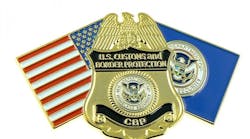While examining the risk factors of Tier 1 suppliers is important, companies must also be sure to review Tier 2 and Tier 3 suppliers in order to comply with the recent passage of the Trade Facilitation and Trade Enforcement Act of 2015.
The Trade Facilitation and Trade Enforcement Act of 2015, which was signed in February 24, 2016 and became effective March 10, 2016, significantly strengthens the law prohibiting imports of goods produced using forced or slave labor, including child labor and subjects the goods to U.S. customs seizure and forfeiture. The law allows any interested party, including competitors and public interest groups, to petition U.S. Customs and Border Protection to investigate whether an import was produced using forced or slave labor in another country.
This act compels companies to become more knowledgeable about their supply chains. “You have to start at square one,” Mickey North Rizza BraveSolutionSpend"> Matters. Looking at global suppliers is difficult, Rizza explained, and there will most likely be information that the company was not aware of.">
Material Handling & Logistics is an IndustryWeek companion site within Penton's Manufacturing & Supply Chain Group.



